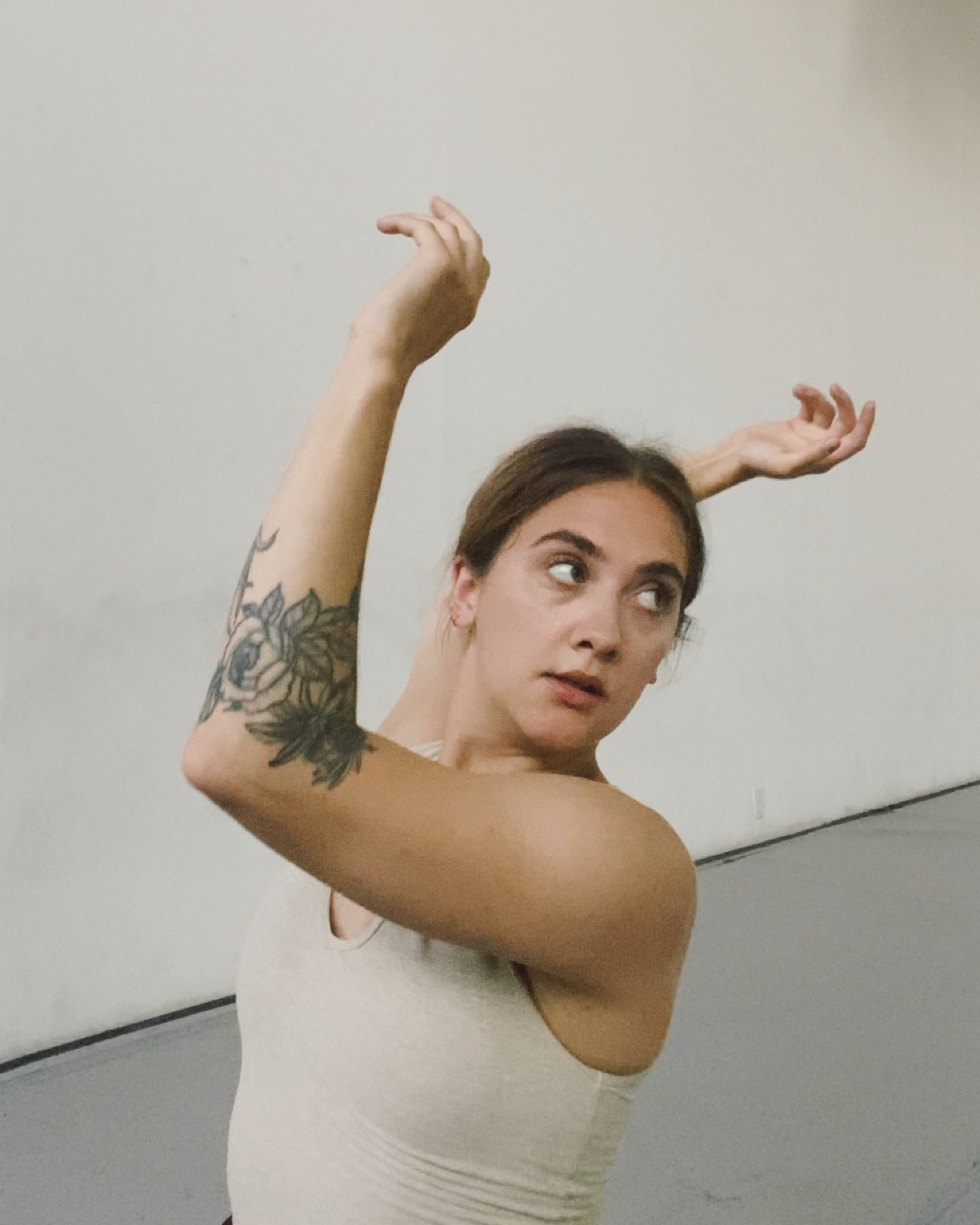
About Sarah
My commitment to dance has always been rooted in practice:
rigorous, investigative, social, lived.
As a young student, I was drawn to American modern dance; what I explored then primarily through movement, I articulate today as a deep commitment to its lineage, its radical potential, and its capacity to ask the enduring questions of what bodies can do, how, and with whom.
I became especially invested in the work of Paul Taylor, training in daily professional classes and intensives as a work-study student, as well as performing as a founding member of the Paul Taylor Teen Ensemble and assistant to director Raegan Wood. My connection to Taylor style continues to develop through ongoing guidance from Rachel Berman and Patrick Corbin.
Over the years, I’ve had the privilege of studying at the Taylor School, the Ailey School, the Merce Cunningham Trust, the American Dance Festival, and the White Mountain Summer Dance Festival, and perform works by Paul Taylor, Merce Cunningham, José Limón, Martha Graham, Alvin Ailey, Bill T. Jones, Laura Glenn, Marjani Forte-Saunders, Rebecca Lemme, and others.
My professional career has taken me between New York and Los Angeles, performing with companies such as DIAVOLO | Architecture in Motion, The Assembly, and my own company, x2 Dance Collective, co-founded with Brynn Bodair. With x2 (“times two”), we created original works in film, installation, taught workshops, and built spaces for dancers of diverse training backgrounds to move together. As a freelance artist, I’ve performed at venues including The Getty, The Metropolitan Museum of Art, Lincoln Center Festival, and Spoleto Festival USA.
As an undergraduate student at Sarah Lawrence College, my practice expanded to include dance history, composition, improvisation, and somatic anatomy under the mentorship of Peggy Gould and John Jasperse. There, I began to understand dance as a lifelong field of inquiry that could be sustained, questioned, shared, and reimagined. I earned an MFA in Dance from California State University, Long Beach, where I focused on choreography and pedagogy. During graduate study, I became increasingly interested in screendance, nontraditional performance venues, and the ways performance can be opened to recreational dancers as well as professionals. For more than a decade, I have taught modern, ballet, contemporary floorwork, improvisation, and partnering to students of all ages and levels at four-year universities, community colleges, high schools, and private studios.
Across these experiences, I have valued most the ways in which dance fosters meaningful connections and collaborative exchange, and anthropology has enabled me to consider the cultural and ethical stakes of embodied life. As a doctoral student at the University of California, Irvine, I look at dance-based programs across the U.S. as forms of extraclinical care. My research focuses on initiatives like DIAVOLO’s Veterans Project, the Esperanza Dance Project, and Dance for Parkinson’s, programs that have emerged at the intersection of art, health, and community development and outreach. I ask what participants gain from these practices, how they theorize their own healing, and how choreography itself operates as a mode of relational and embodied knowledge. My research is motivated by the same questions that first drew me to dance: how movement expresses meaning, how our bodies remember, and how we come to understand one another through shared physical practice.
In my free time I can be found catching up on sports (though I’m partial to MMA and the Eagles, I’ll watch just about anything), drilling trivia (I was a semifinalist on my episode of GSN’s Master Minds and have been chasing that high ever since), thrifting, drinking coffee, or hanging out with my cat.
